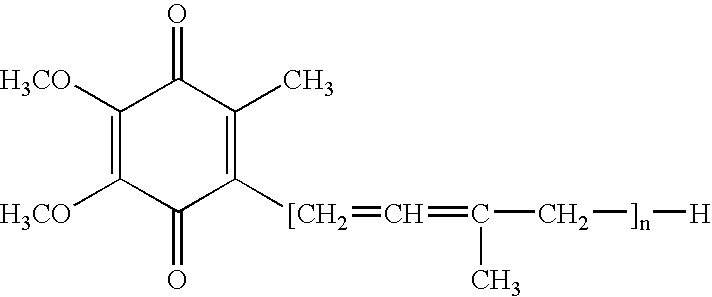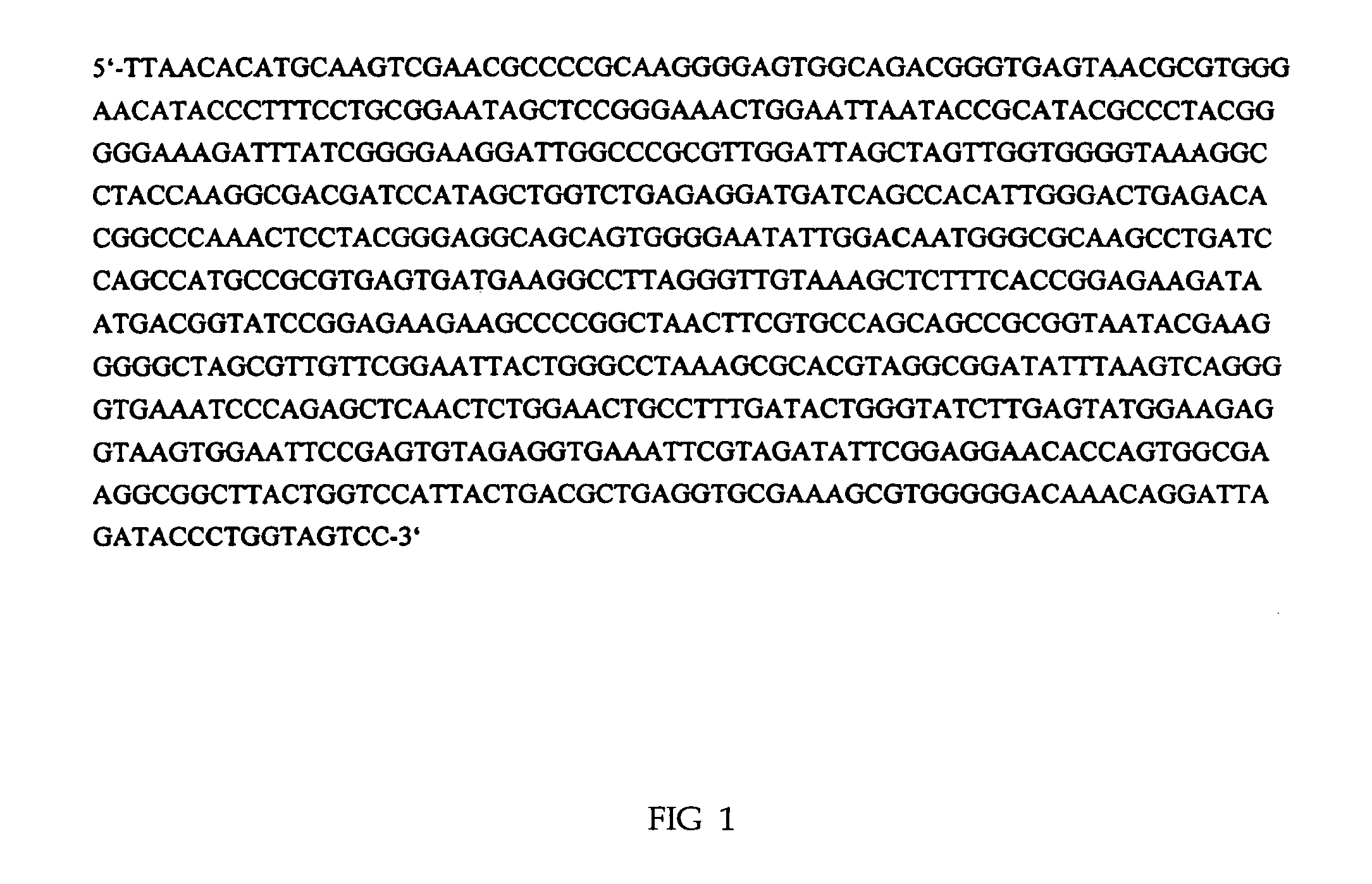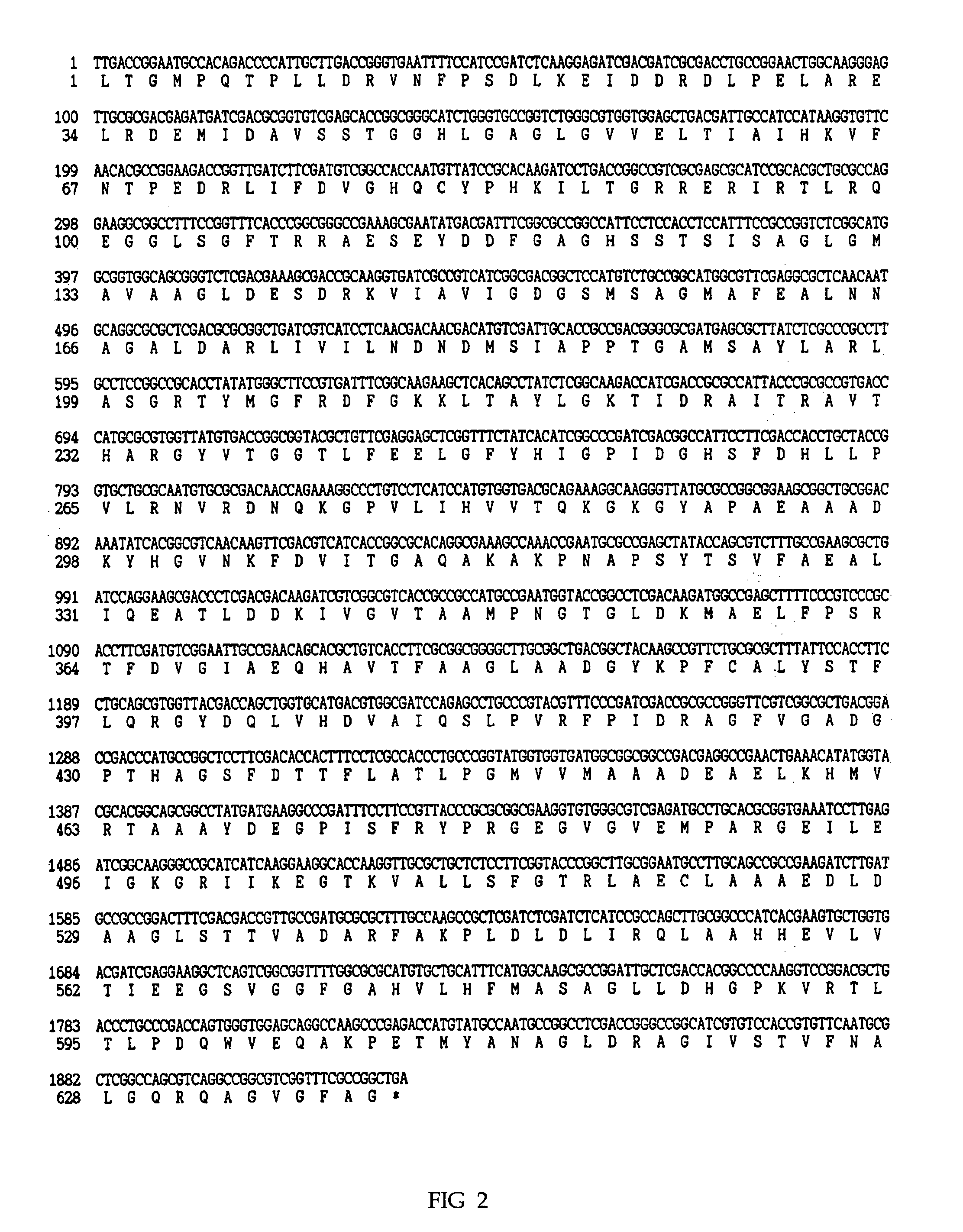Fermentation process for preparing coenzyme Q10 by the recombinant Agrobacterium tumefaciens
a technology of agrobacterium tumefaciens and fermentation process, which is applied in the direction of enzymology, lyase, transferase, etc., can solve the problems of unsatisfactory coenzyme q productivity, low productivity and high cost of products manufactured from these companies, and the inability to achieve coenzyme q/sub>10 /sub>satisfactory,
- Summary
- Abstract
- Description
- Claims
- Application Information
AI Technical Summary
Problems solved by technology
Method used
Image
Examples
example 1
Separation and Identification of A. tumefaciens Strain
[0044] Preferred strains producing coenzyme Q10 were primarily screened from approximately 1×106 bacteria obtained on LB solid media from the soil samples. Then, secondary screening from them can separate about 500 bacteria considered as high growth rate of biomass and high productivity of coenzyme Q10. Finally the bacterium to be highest in productivity of coenzyme Q10 was screened. Identification of said bacterium finally screened to produce coenzyme Q10 at high concentration was carried out by 16S rDNA sequencing (Jukes, T. H. & Cantor, C. R. 1969).
[0045]FIG. 1 shows the 16S ribosomal RNA partial sequence of Agrobacterium tumefaciens BNQ producing coenzyme Q10 of the present invention. Further, the analysis results of homology among 16s rRNA sequence from analog species are shown in Table 3.
TABLE 3The homology among 16s rRNA sequence from analog species forproducing coenzyme Q10AccessionStrainNo.% SimilarityAgrobacterium t...
example 2
Cloning of A. tumefaciens DXS Gene
[0047] For cloning the DXS gene, cDNA of A. tumefaciens was separated. A pair of PCR primers were manufactured referring to closest known DXS amino acid sequences from other strain. Followings are a pair of primers for cloning the DXS gene from A. tumefaciens.
F15′-CAAAATCCTCCTACCGGCCGC-3(SEQ ID NO: 3)R15′-CGCTGCTGTCGCGATGCC-3′(SEQ ID NO: 4)
[0048] The above primers were used to amplify 873 bp of DNA from cDNA of A. tumefaciens. From the comparison with DNA sequences of DXS derived from various microorganisms, it was found that the obtained PCR products has the highest similarity with the existing DXS. In order to obtain the entire DXS gene, 5′- and 3′-RACE (rapid amplification of cDNA ends) methods were employed, which were carried out according to the manufacturer's manual (Roche Diagnostics GmbH, Manheim, Germany) using 5′- and 3′-RACE kit. Primers specific for DXS genes were manufactured for each RACE.
i) Primers for 5′-RACESP15′-CTCGGCCATCTTG...
example 3
Establishment of Expression System in E. coli of DXS Derived from A. tumefaciens
[0051] In order to determine the activity of DXS, this enzyme was expressed in E. coli, after cloning from A. tumefaciens. A pQE system (QIAGEN, USA) well known among E. coli recombinant protein expression system was used, because its system contained T5 promoter.
[0052] Because of DXS gene fragment including a BamHI restriction site at 5′ end and a HindIII restriction site at 3′ end, both restriction enzymes BamHI and HindIII were simultaneously treated. After extraction on agarose gel, a 1.9 kb DXS gene was separated and purified. Then, such BamHI and HindIII double restriction enzyme treatment was also performed in expression vector pQE30 (3.4 kb). Consequently, 1.9 kb of DXS gene was cloned and inserted into the vector, which was designated as pQX11 (FIG. 4).
PUM
| Property | Measurement | Unit |
|---|---|---|
| Temperature | aaaaa | aaaaa |
| Density | aaaaa | aaaaa |
| Density | aaaaa | aaaaa |
Abstract
Description
Claims
Application Information
 Login to View More
Login to View More - R&D
- Intellectual Property
- Life Sciences
- Materials
- Tech Scout
- Unparalleled Data Quality
- Higher Quality Content
- 60% Fewer Hallucinations
Browse by: Latest US Patents, China's latest patents, Technical Efficacy Thesaurus, Application Domain, Technology Topic, Popular Technical Reports.
© 2025 PatSnap. All rights reserved.Legal|Privacy policy|Modern Slavery Act Transparency Statement|Sitemap|About US| Contact US: help@patsnap.com



